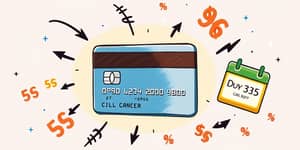
Carrying balances on several credit cards can feel like climbing a steep mountain with no summit in sight. Yet, with a clear plan and disciplined approach, you can transform that uphill battle into a steady ascent toward financial freedom. This article unpacks proven strategies, practical tips, and the psychological tools you need to conquer multiple credit card debts efficiently.
Many Americans juggle multiple credit cards, often juggling balances on two, three, or even more accounts. While each card offers flexibility and potential rewards, it also carries the risk of spiraling interest charges and missed payments. With average APRs ranging from fifteen to twenty-five percent, small balances can balloon rapidly when left unchecked.
Beyond the mounting interest, multiple due dates and varying terms create logistical hurdles. Late fees and credit score impacts can compound the stress, eroding your confidence and making it harder to stay motivated. Recognizing these challenges is the first step toward regaining control.
Not all payoff methods are created equal. Choosing the right approach depends on your personality, financial situation, and tolerance for risk. Below are four of the most effective strategies:
The snowball method offers rapid emotional wins by paying off one small balance at a time. You list your cards from smallest to largest balance, pay the minimum on all but the smallest, and direct extra funds to that target. Each time a card is eliminated, you roll its payment into the next smallest—a process that builds momentum and motivates continued progress.
By contrast, the avalanche method zeroes in on the highest-interest account first. After covering all minimum dues, you pour additional payments into the card with the steepest APR. This approach saves you the most money in interest over the long haul but requires patience, as early victories may be less frequent.
Transferring high-interest debt to a new card offering zero percent introductory rates for twelve to twenty-four months can dramatically accelerate payoff. Without interest accruing, every dollar you pay chips directly into the principal balance. However, balance transfer fees—typically three to five percent of the amount—and looming rate resets demand careful calculation.
Alternatively, a debt consolidation loan rolls multiple card balances into a single installment loan, often with a lower fixed APR and a predictable monthly payment. Simplifying your payments into one due date can alleviate stress and help you plan more effectively, though extending the loan term might increase total interest paid over time.
Beyond your chosen payoff strategy, adopting solid money habits is crucial. Start by tracking every due date and APR in one centralized spreadsheet or app. Setting up automated payments ensures you never miss a deadline, protecting your score and avoiding late fees.
Debt repayment is as much a mental game as a financial one. Celebrating small victories—like paying off a single card—releases dopamine, fueling your drive to continue. Visual tools, such as a debt payoff chart or calendar stickers, make progress tangible and rewarding.
If you find yourself losing motivation, consider teaming up with a friend or joining an online community. Sharing milestones and offering mutual encouragement can transform a solitary struggle into a collaborative journey toward long-term financial well‐being.
While strategies like balance transfers and debt negotiation can be highly effective, they carry risks. Introductory APRs expire, often reverting to rates above twenty percent. Consolidation can lower monthly payments but extend your debt’s lifespan, increasing total interest costs.
Debt settlement—where you negotiate to pay less than you owe—should be a last resort. It can significantly damage your credit score and may incur taxable income if forgiven amounts exceed IRS thresholds.
Leverage free calculators to model your snowball or avalanche plans. Many banks and credit unions offer online tools that let you plug in balances, APRs, and payment amounts to project payoff timelines. Budgeting apps like Mint or YNAB can automate expense tracking and highlight opportunities to free up extra cash.
Tackling multiple credit cards may feel overwhelming, but a clear, disciplined plan can turn chaos into control. Whether you choose the psychological lift of the snowball method or the mathematical efficiency of the avalanche approach, consistent payments and smart practices will pave your way to financial freedom and peace of mind.
Remember: every payment brings you one step closer to closing that final balance. Embrace the journey, celebrate each milestone, and watch as your debt mountain transforms into the foundation of your future prosperity.
References













